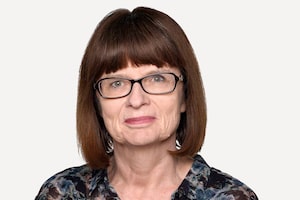These days, with the news media under attack, there are few things more important than a public statement of the democratic mission, principles and practices behind the work of journalists.
The Globe and Mail’s Editorial Code of Conduct outlining principles and practices of good journalism and expectations for staff was extensively reviewed and then updated this spring to use more precise terminology for what good journalism looks like.
While the principles are rarely changed, this time one reference to “objectivity” was changed to “fairness and transparency.”
I was part of the committee of Globe editors and reporters who reviewed and recommended the changes to the Editorial Code of Conduct, and it was an argument we agreed with: Expecting objectivity of individual journalists is not the right measure.
Rather, it is the process of always trying to establish what is true through skeptical questioning, researching and being fair and open to different points of view. And this process must be followed regardless of one’s personal beliefs. Ultimately, truth and accuracy should prevail.
While this process is critical, news stories cannot always strive for “balance” – a sometimes misguided approach that gives lies and misinformation the same treatment as the truth.
A recent survey by the Poynter Institute, a U.S. journalism-training organization, found that the statement most supported by journalists was that “journalism’s first obligation is to the truth.”
Another change in wording involved “political” and “partisan.” The code previously said that while private views expressed through voting or with family and close friends are acceptable, political or partisan views that go beyond your public-facing role should not be expressed in public.
The word “political” was removed, as it is now used to describe many issues well beyond partisanship and was deemed too broad. The code now says: Raising questions is what journalists do, without allegiance to a controversial cause or party.
Another major change was from “anonymous” to “confidential” sources. Globe reporters and their editors know who their sources are. They must evaluate whether a person is in a position to know something, whether they have an axe to grind and whether they are trustworthy, because if the information they provide is wrong, the error and embarrassment are The Globe’s, not the source’s.
There are four basic rules for the use of confidential sources:
- Is the information in the public interest and is the use of confidential sources the only way to reliably get that information?
- We seek to have multiple confidential sources before we publish, although there are exceptional instances in which a single source may suffice.
- The quality of the source should also be considered. Here is where the reporter and editor must weigh the importance of the information against the trustworthiness of the source of that information.
- The use of confidential sources is about getting vital information, not opinion or speculation or ad hominem criticism. We should almost always avoid quoting confidential sources directly and choose to paraphrase instead.
Occasionally we encounter circumstances (reporting under repressive regimes, for example) where people fear for their safety and the use of their names could put them in danger.
Every effort should be made to describe the source’s credentials without exposing them – for example, “a government source with knowledge of the decision.” It is important to note that while reporters may speak to sources on a confidential basis, any decision to use that information is up to the news organization after doing its due diligence.
Two good examples of the importance of using confidential sources and documents appeared in The Globe this month. Marieke Walsh and Emma Graney wrote that confidential documents “show that federal bureaucrats identified only about half of the emissions cuts required from the pollution-heavy oil and gas sector just weeks before Prime Minister Justin Trudeau unveiled his March climate plan.”
Robert Fife and Steven Chase wrote that two senior government sources said the office of Foreign Affairs Minister Mélanie Joly knew a senior department official would be attending a party at the Russian embassy in Ottawa.
Those are both news articles you just don’t get through public channels, without granting confidentiality to people in the know.
After the committee spent months reviewing the code, it sent its recommendations to editor-in-chief David Walmsley for approval. It was then explained to staff and updated on our website at the far bottom right of the homepage.
No doubt, it will be reviewed again in a few years – it is important to keep the standards current and relevant. It is also critical that you see what the standards are for The Globe and Mail and that you hold us to account on these standards.
If you have any thoughts on this, please write to me at publiceditor@globeandmail.com.
 Sylvia Stead
Sylvia Stead